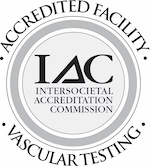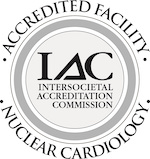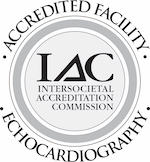Exercises to Manage Peripheral Artery Disease Pain
Peripheral Artery Disease or PAD is a vascular disease caused by the narrowing of arteries in the extremities of the body including legs, arms and even the head. Most cases of PAD are caused by aging, excess weight and obesity, high cholesterol, high blood pressure, diabetes and/or smoking. All of these factors can increase the chance of atherosclerosis, a buildup of plaque in the arteries, and have adverse effects on circulation. The primary symptom of PAD is pain in the extremities along with weakness, pale skin and even open wounds. Most patients that experience PAD are over the age of 70, although it can also occur in younger patients with significant risk factors for atherosclerosis.
Treatment and managing symptoms
Treatment for PAD usually begins with lifestyle changes to include more exercise, eating more healthfully and quitting smoking. We try to manage the disease with noninvasive interventions in the early stages. If allowed to progress however, PAD can require more invasive procedures such as bypass grafting, angioplasty, and atherectomy.
Managing Symptoms with Exercise
Throughout the course of PAD treatment, exercise is vital in improving blood circulation and reducing associated pain. There are several options, both medically supervised and home-based that can be very effective. These exercises include:
- Structured medical center-based exercise programs: These are usually treadmill-based and supervised by the medical team. Walking is gradually increased over time within the bounds of the patient’s pain tolerance.
- Home-based exercises to include walking outside on level ground, starting with about twenty minutes per day at a rate that is comfortable and pain-free. This walking can be increased based on how the patient feels, up to 45 minutes or more per day.
Regardless of structure, studies have shown that walking provides significant improvement in symptoms. Other non-impact exercises may also be beneficial, but they have not been studied to the degree that walking has.
Important Tips When Exercising for PAD
- Stretch – it’s important to warm up your muscles by stretching before your walk. Not only will it help reduce pain, but helps you avoid common injuries. Cooling down and stretching at the end of your workout is also important.
- Stop walking if you begin to feel pain, weakness or dizziness. Feel free to take breaks between walking stints of 5-15 to avoid overworking.
- Change it up – don’t always walk the same path – try walking alternately at the beach, the park or in town to keep your walks fresh and interesting.
- Don’t expect immediate results. You will have to work up your stamina and associated pain relief. It will not happen the first few times you go out and walk.
If you or someone you know may have peripheral artery disease or PAD, we encourage you to schedule a consultation with one of our vein specialists here on Long Island.







